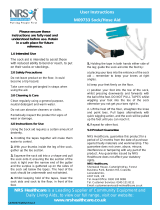Eurotech DynaPCN 10-20 is a device for counting people and passengers. It has two channels, allowing it to count people entering and leaving a given area simultaneously. The DynaPCN 10-20 also has a digital input that can be used to connect a door sensor, enabling it to automatically count people only when the door is open. Additionally, it features an Ethernet port for communication and PoE (Power over Ethernet) capability, allowing for easy installation and power supply.
Eurotech DynaPCN 10-20 is a device for counting people and passengers. It has two channels, allowing it to count people entering and leaving a given area simultaneously. The DynaPCN 10-20 also has a digital input that can be used to connect a door sensor, enabling it to automatically count people only when the door is open. Additionally, it features an Ethernet port for communication and PoE (Power over Ethernet) capability, allowing for easy installation and power supply.


















-
 1
1
-
 2
2
-
 3
3
-
 4
4
-
 5
5
-
 6
6
-
 7
7
-
 8
8
-
 9
9
-
 10
10
-
 11
11
-
 12
12
-
 13
13
-
 14
14
-
 15
15
-
 16
16
-
 17
17
-
 18
18
Eurotech DynaPCN 10-20 is a device for counting people and passengers. It has two channels, allowing it to count people entering and leaving a given area simultaneously. The DynaPCN 10-20 also has a digital input that can be used to connect a door sensor, enabling it to automatically count people only when the door is open. Additionally, it features an Ethernet port for communication and PoE (Power over Ethernet) capability, allowing for easy installation and power supply.
Ask a question and I''ll find the answer in the document
Finding information in a document is now easier with AI
Related papers
-
Eurotech DynaPCN 10-20 Owner's manual
-
Eurotech PCN-1001 Owner's manual
-
Eurotech PCN-1001 Owner's manual
-
Eurotech PCN-1001 Owner's manual
-
Eurotech DynaPCN 10-20 Owner's manual
-
Eurotech DynaPCN 10-20 Owner's manual
-
Eurotech DynaPCN 10-20 Owner's manual
-
Eurotech DynaPCN 10-20 Owner's manual
-
Eurotech DynaPCN 10-30 Owner's manual
-
Eurotech PCN-1001 Owner's manual
Other documents
-
 NRS Healthcare M09733 Operating instructions
NRS Healthcare M09733 Operating instructions
-
Eufy S320 User guide
-
Bull AIX 5.3 - Communications Programming Guide
-
Bull AIX 5.2 - Communications Programming Guide
-
Bull AIX 4.3 - Communications Programming Guide
-
Software tail-f ConfD User guide
-
Agilent Technologies N5181A/82A User manual
-
Agilent Technologies ES User manual
-
Agilent Technologies FS2010 Datasheet
-
Digi RabbitFLEX User manual


















